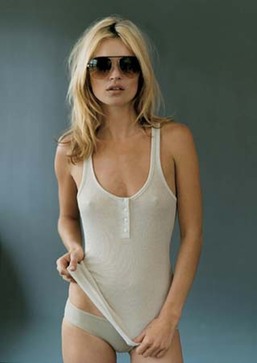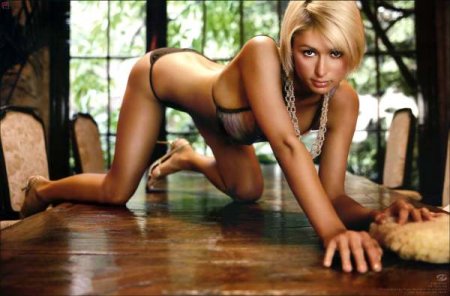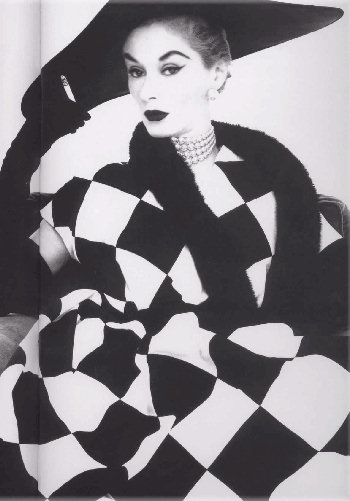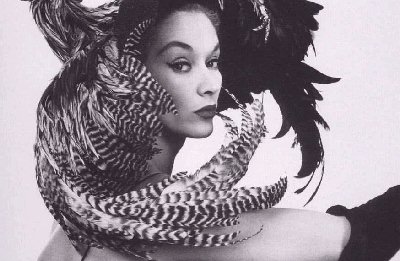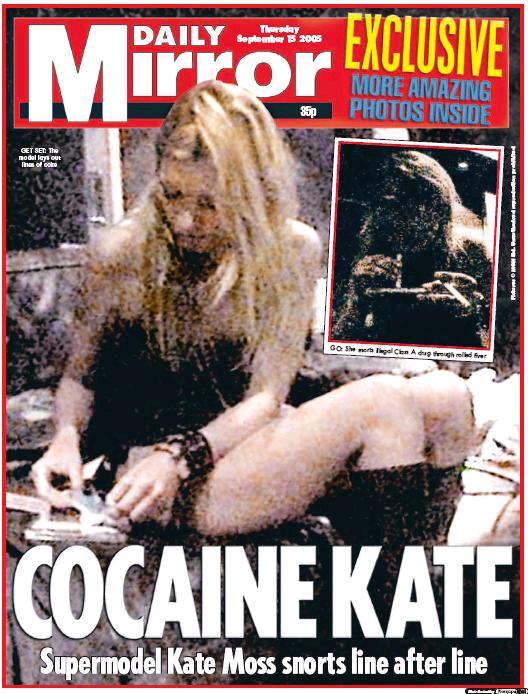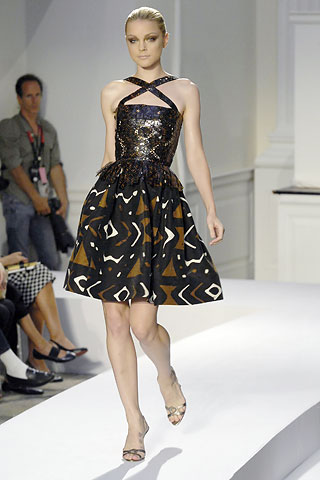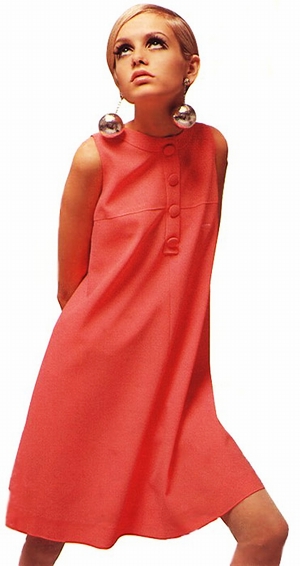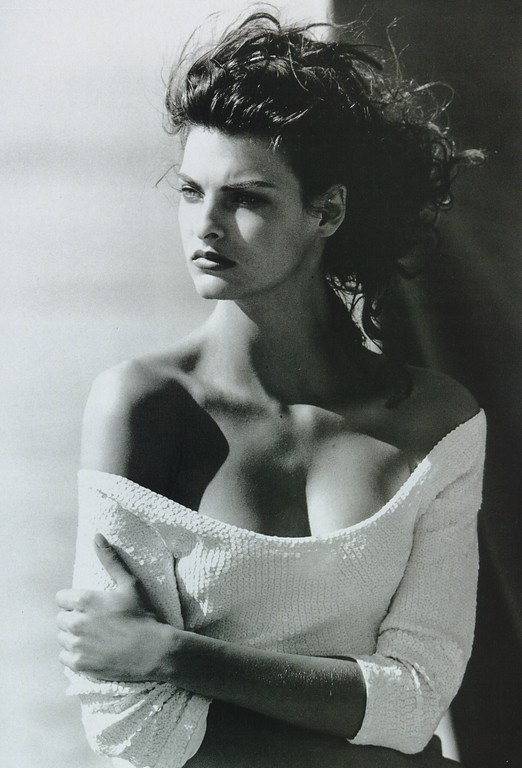| Supermodels & Fashion Models
The Fashion eZine - Modeling
Selling Beauty and FameBring up the topic of supermodels in a conversation and you are more likely to hear criticism and insults than praise and rave reviews. The central theme of that is the impossible standards that supermodels set. Flawless skin, an envious physique and looks that make men and women drool in response. We're not just talking about female supermodels, but male supermodels as well. Generally speaking it is the female supermodels who are butt of jokes and insults, usually related to health problems like anorexia, the sheer idiocy of haute couture clothes that simply aren't wearable in real life, and the sexual promiscuity and prostitution that goes on in the fashion industry. In contrast male supermodels receive few complaints and a lot less attention, despite the occasional sex scandal. The term supermodel was first used in the early 1940s and became popular during the 1980s. It refers to the fashion models who are the most famous, most desired and highest paid fashion models, often with a background in haute couture and commercial work for the biggest brand names and magazines. They lend their fame and looks to the product, relying on recognition to help promote the product. They usually develop a good reputation within the fashion industry, with mult-million contracts working on ad campaigns for elite fashion designers and expensive labels. No one announces that so-and-so is a supermodel, it just kind of happens when they reach the level of fame where their name is in the tabloids/etc (so sleeping around with Hollywood actors can certainly boost your career). Name recognition is the single largest indicator that someone is a supermodel.
"In order to become a supermodel one must be on all the covers all over the world at the same time so that people can recognise the girls." - Claudia Schiffer. You could argue that Paris Hilton for example is a supermodel. She didn't do it in the normal way however. Paris Hilton gained her fame by slutting herself on the internet and then used it as leverage to end in numerous advertising campaigns for Iceberg Vodka, GUESS, Tommy Hilfiger, Christian Dior and Marciano.
The First SupermodelLisa Fonssagrives (b.May 17, 1911 – d.February 4, 1992) is considered by some to be the first supermodel, although she was never called that during her lifetime. She was a major fashion icon from the 1930s to 1950s and featured numerous times in Town & Country, Life, Vogue, the original Vanity Fair, and Time. She was essentially "the It Girl" of the time. By today's standards her looks would be considered too angular, snobbish with a personality similar to Cruella de Vil (the fictional character was loosely based off of Lisa Fonssagrives). She was born born Lisa Anderson in Sweden. She moved from Sweden to Paris hoping to become a ballet star, but instead ended up in the fashion business. Fonssagrives once described herself as a "good clothes hanger". She worked with photographers George Hoyningen-Huene, Man Ray, Horst, Erwin Blumenfeld, George Platt Lynes, Richard Avedon, and Edgar de Evia. She married French photographer Fernand Fonssagrives in 1935 and they later divorced. She eventually married photographer Irving Penn in 1950. Both of her children went on to become fashion designers.
Photos of Lisa Fonssagrives
Lisa Fonssagrives #01
RacismOne of the frequent complaints about the fashion industry is that there is very few non-white supermodels. Only in the last 20 years have African, Asian or Latina supermodels started to make names for themselves and they are still wildly outnumbered but the number of caucasian women and men in the business. Part of this is probably because for years the fashion industry has been centred around Paris and fashion scouts were searching for new faces in only North America and Europe. The other part is blatant racism and an eurocentric attitude with regards to fashion. In the last 20 years however the fashion industries in Africa, Asia, South America, Russia and the Middle East have started to boom and grow, with local talent being sought overseas as fashion designers look for faces that are fresh and exciting. Ajuma Nasenyana for example is an excellent example of this shift in the global fashion industry. Other examples include: Tyra Banks, Naomi Campbell, Selita Ebanks, Tila Tequila, Aline Nakashima, Adriana Lima and Tyson Beckford.
Anorexia and Health ProblemsAnorexia and Bulimia are common place in the fashion business these days, as is drug addiction and prostitution (see below), but the industry is trying to do something about it by banning models with low BMIs from fashion shows. Unfortunately there is also the Pro Ana movement which is actually promoting anorexia as a "suicidal lifestyle". British supermodel Kate Moss has even gone so far as to define herself as 'Rexy', arguing it is a combination of anorexia and sexy. Kate Moss maintains her size double-zero body with a diet of green tea and lettuce. Kate Moss insists she is naturally thin, but health experts disagree. Eating nothing but lettuce is not healthy. But this kind of mentality is both destructive and sets a bad example for both models and designers. See the effect it had on Carré Otis. Our advice is that if people want to lose weight, then exercise. Starving yourself to death is not the answer.
Drug AddictionKate Moss has also been in and out of rehab due to her cocaine addiction, highlighting another problem within the fashion industry. Supermodels, with their immense wealth and partying lifestyle, often going for the harder drugs like cocaine, heroin and XTC. Anorexia related health problems and drug overdoses are the leading causes of death for fashion models.
ProstitutionIt is a well-known fact that fashion models sometimes pose nude and have sex with their clients. You would think it was rare, but according to fashion models who have spoken out about the problem it is actually a daily occurrence. Beneath all the fluff and feathers of the fashion industry is a thriving sex industry which thrives on sexual exploitation. As a whole the industry is like a giant front company for "working girls" willing to sell themselves for money and/or drugs. It isn't glamourous, but the industry is rife with sexual exploitation, deceit and a callous attitude towards rape (see the Dolce & Gabbana ad below).
Haute CoutureHaute couture (literally "high sewing") refers to the world's biggest fashion brands, fashion houses and designers, often with reference to the trend setters. In France companies cannot use the term "haute couture" unless they have at least 15 full time staff, make made-to-order clothing and have two fashion shows per year (with a minimum of 35 outfits each for both day and evening wear). For supermodels haute couture fashion shows are the most important stepping stones to their careers (and maintaining their careers). All the major fashion magazines track what goes on with regards to the haute couture fashion shows and who the models are. Making a name for yourself in the sea of skinny models is difficult and to do so the models have to stand out in some way that attracts attention. In recent years fashion designers have been on the lookout for models who appear "dull and lifeless" in hopes to place more emphasis on the clothing than the models. But this is a double-edged sword as such shows receive little press in comparison, and thus not a lot of free publicity. Having a well-liked and iconic face, something unique, is wear supermodels come in. Selling high fashion is a tricky business and the smaller companies go bankrupt regularly due to bad choices. Choosing the right models to showcase the clothes can make or break a business. See Also
|
Male Supermodels
Alex Lundqvist
Female Supermodels
Adriana Lima
|
|||

Male supermodelsMale supermodels make up a tiny fraction of the fashion industry. There are comparatively few male supermodels, they are paid considerably less, but with one advantage: Male supermodels are treated with more respect in the media. Female supermodels get dragged throught the tabloid mud regularly, especially when they make mistakes like regular humans, say stupid things or get caught drunk driving or snorting cocaine (like Kate Moss frequently has). Male supermodels in contrast get almost no coverage in the tabloids, newspapers and apparently live relatively quiet lives. We can assume they still party, get drunk and get in accidents, but they somehow manage to keep it quiet because the general public just doesn't care what male supermodels do or don't do. For male supermodels their biggest challenge is staying in shape physically so their muscles look attractive. They aren't plagued by social criticism for the abundance of anorexia in the fashion industry, and overall seem to keep their noses clean when it comes to staying out of trouble. We should also note that male supermodels usually have a second career and are significantly poorer. Despite the added fame, they still have to pay the bills and quite a few male supermodels have set aside time to work on second careers (wisely realizing that their good looks won't last forever).
1960s:In 1968 an article in Glamour described Twiggy, Cheryl Tiegs, Wilhelmina, Veruschka, Jean Shrimpton, Lynn Sutherland and fifteen other models as "supermodels". Of these the most prominent supermodel of the 1960s was "Twiggy" (Lesley Hornby) and known for her short hair and twig-like waif appearance. During that era Donyale Luna became the first African American model to appear in Vogue and shortly after the first African American model to be on the cover of American Vogue was Beverly Johnson.
1970s:In 1975 Margaux Hemingway landed a then-unprecedented million-dollar contract as the face of Faberge's Babe perfume and the same year appeared cover of Time magazine, labelled as one of the "New Beauties," giving further name recognition to fashion models. Prominent models of the 1970s included Janice Dickinson, Cheryl Tiegs, Jerry Hall, Iman Abdulmajid, Patti Hansen, Anna Bayle, Beverly Johnson, Gia Carangi and Christie Brinkley.
1980s:Fashion designers in the eighties began advertising on television and billboards, and supermodels became more readily familiar to the masses, household names instead of nameless faces. The supermodels of the eighties also embraced old-style glamour and tried to replace movie stars as symbols of luxury and wealth. Models like Carol Alt and Paulina Porizkova endorsed non-fashion products like Diet Pepsi to Ford Trucks. Elle MacPherson became known as "The Body" sold more pin-up posters than any actress in Hollywood.
1990s:By the 1990s the supermodel became increasingly prominent in the media with the title comparable to the term superstar. Supermodels acted in movies and TV shows, appeared on talk shows, appeared in tabloid rags, started their own fashion franchises and earned herself millions in lucrative contracts. At one point Linda Evangelista mentioned to Vogue that "we don’t wake up for less than $10,000 a day." In 1991 Christy Turlington signed a contract with costmetic company Maybelline that paid her $800,000 for twelve days' work each year. In 1995 Claudia Schiffer reportedly earned $12 million for her various modeling assignments. During the 1990s there was also the "Big Six", the most recognized supermodels: Claudia Schiffer, Cindy Crawford, Kate Moss, Linda Evangelista, Naomi Campbell and Christy Turlington. Each were heavily in demand, dominated magazine covers, fashion runways and print media.
2000s:In recent years actresses, pop singers, and other celebrities have began gradually replacing models on fashion magazine covers and ad campaigns. Actors are cheaper in comparison and still draw in the crowds due to their fame and personalities. These days the majority of fashion models also come from non-English speaking countries and thus making the transition to a supermodel (and working on TV, movies, etc.) is a more difficult task. In September of 2007 Claudia Schiffer said that "supermodels, like we once were, don't exist any more." The supermodel is in decline and has been replaced by attention-grabbing people like Paris Hilton who act and model (regardless of their total lack of skill or experience).
The World's Top Supermodels
Fashion Models Database
| ||||
